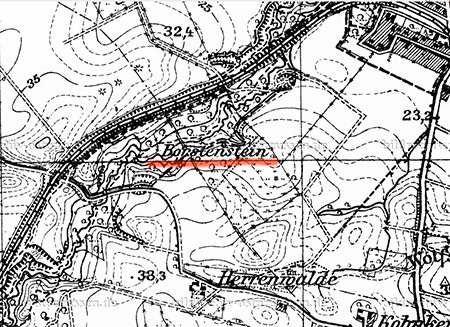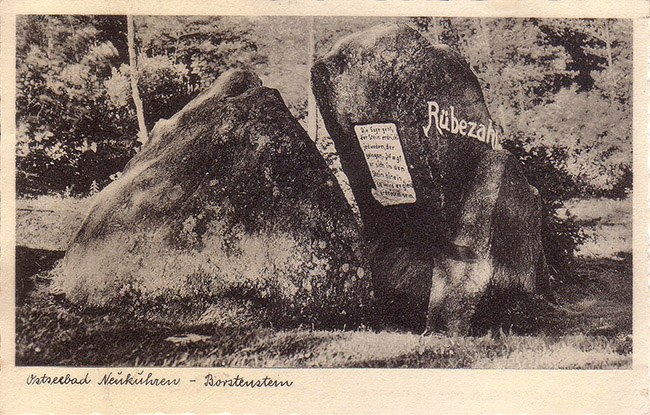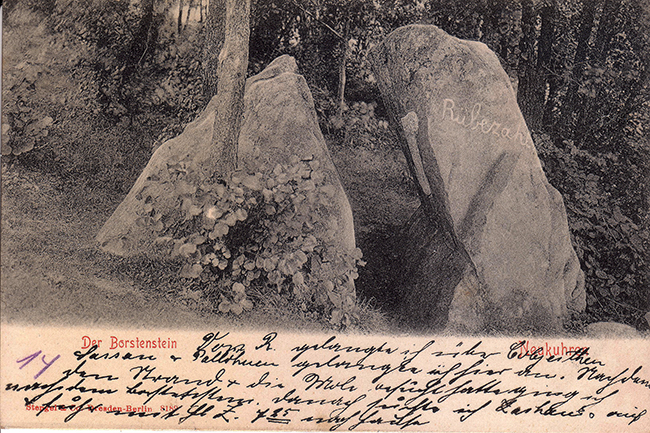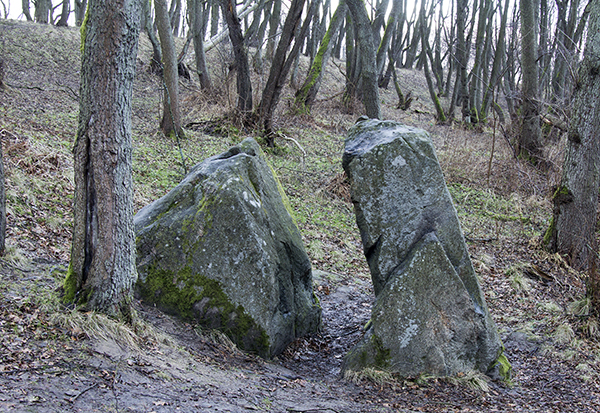Stone of Lies
"The Broken Stone (Der Borstenstein)
In ancient times, a peasant's son from Neukuhren found himself as an apprentice to a tailor, and he fell in love not only with his profession, but also with his daughter. One day, the boy needed to leave Neukuhren. The girl decided to accompany her lover to a huge granite boulder lying in a beautiful valley. Near the stone, the lovers said goodbye and swore fidelity to each other: our fidelity will be as strong as this stone. After many years of wandering, the boy returned home. The girl met him in the same place where she had seen him off - at the granite stone. The boy raised his hand up, swearing to his beloved that all these years he had been faithful to her. When the girl raised her hand in an oath, a terrible lightning struck the stone and split it in two. Then the boy realized that his bride had not been faithful to him, so later he took another girl as his wife.
This legend is given by Erich Pohl in his book “Folk Tales of East Prussia” (Erich Pohl “Die Volkssagen Ostpreussens”, Königsberg, 1943).
It is about a stone located in the forest on the outskirts of Pionersk (former Neukuhren).

There is another version of this legend. It says that a young man and a girl swore fidelity to each other at two halves of a split stone, which - and everyone was sure of this - would never come together again. When the young man returned from his travels, before the wedding, he and his bride went to the stone again. And when the girl decided to pass between its two halves, lightning folded and the halves closed, crushing the unfaithful one. And since then this stone is called the "Stone of Lies" .
On old postcards, the "Stone of Lies" is still called "The Broken Stone" - Der Borstenstein, but often the postcard contains a quatrain:
Die Sage geht: der Stein erdrückt
Jedweden, der gelogen;
Wagt man sich in den Spalt hinein,
So wird es bald vorüber sein.
A rough translation of it reads:
The legend goes:
Anyone who has lied,
Who will enter the crack,
Will be crushed.


Anyway, I took the risk of walking between the two halves of the stone... And here I am, writing these lines. So you can be sure of my crystal honesty))
On old postcards, the inscription on the right half of the stone is clearly visible - Rübezahl. Rübezahl is a mountain spirit personifying bad weather in German-Czech mythology. The inscription has now worn off.

Previously, a staircase and a wooden bridge across the river (now called Chistaya) led from the center of Neukuhren to the stone. Now it is easier to get to the stone either by walking along the railway towards Svetlogorsk, or from Rabochaya Street, from the cemetery, again on foot along the railway tracks. You can navigate by kilometer posts. The stone lies about a hundred meters perpendicular to the tracks at the 43 km 800 m mark.
